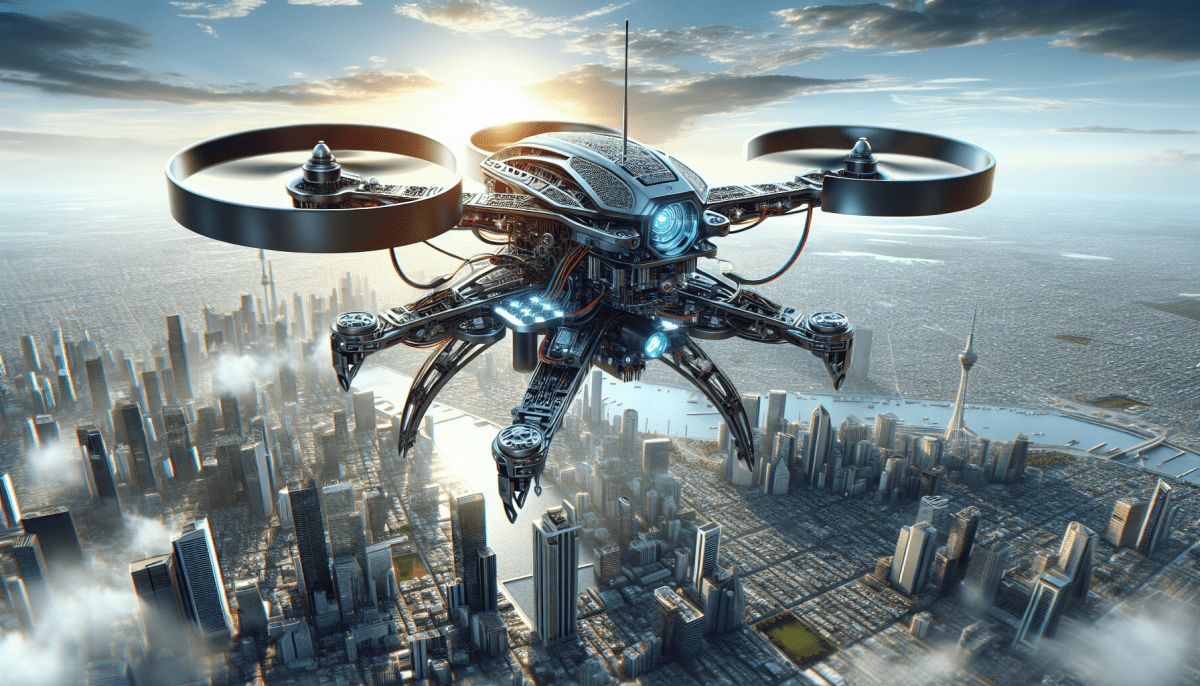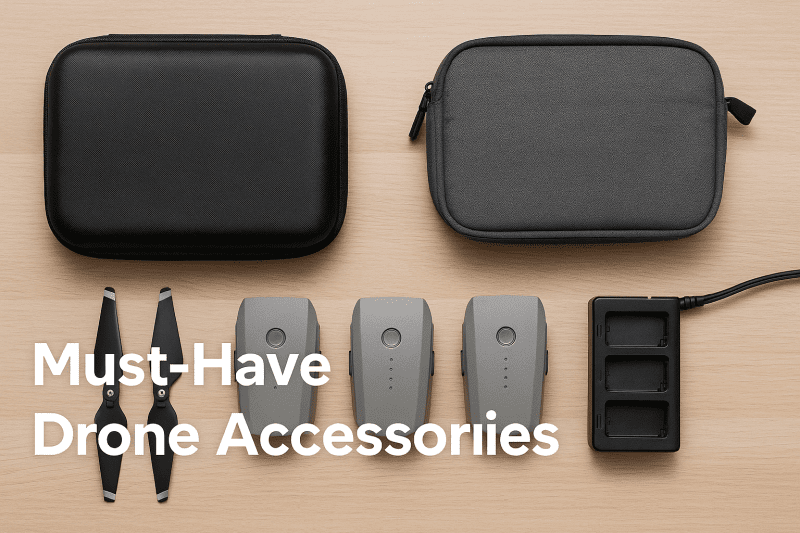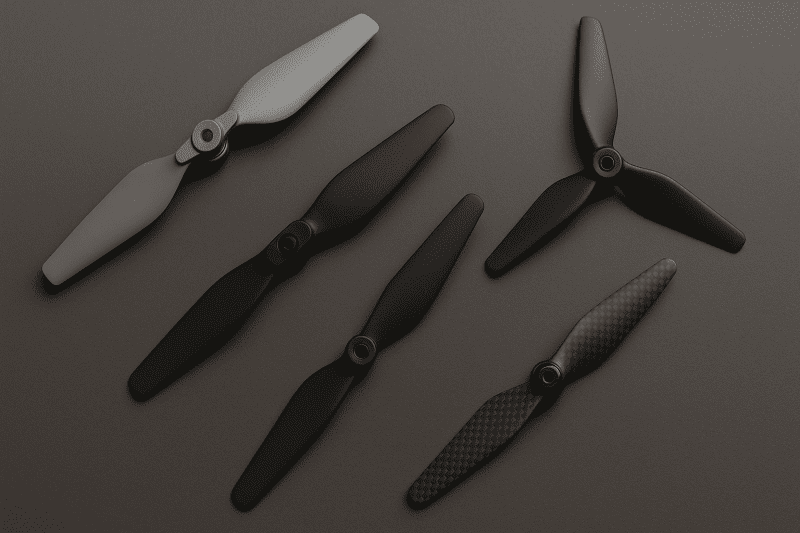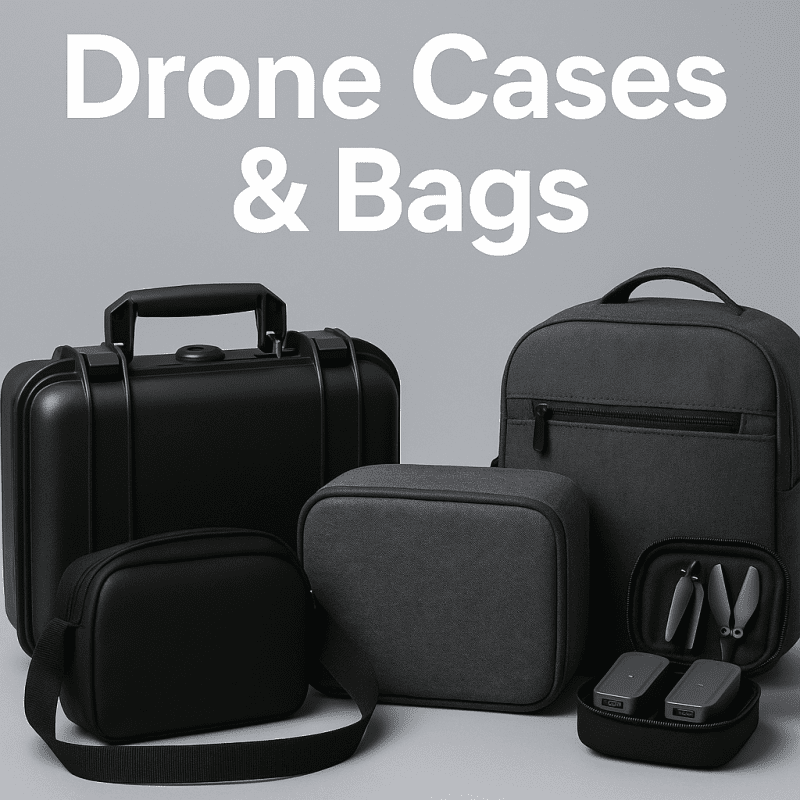Understanding Drone Antennas: A Guide to the Different Types
Drone antennas are an essential part of any drone's setup. They allow for communication between the drone and the remote controller, as well as between the drone and any other devices it may be connected to. There are several different types of drone antennas available, each with their own unique advantages and disadvantages. In this guide, we'll take a closer look at the different types of drone antennas to help you choose the best one for your specific needs.
1. Dipole Antennas
Dipole antennas are the most common type of antenna used on drones. They consist of a simple wire that is split in the middle, with each end connected to the drone's transmitter and receiver. Dipole antennas are lightweight, inexpensive, and easy to install. However, they generally have a short range and are not very directional. They are best suited for short-range, low-budget applications.
2. Patch Antennas
Patch antennas are also commonly used on drones. They are small, flat antennas that have a directional radiation pattern. This means that they are effective for long-range transmissions, but only in a specific direction. They are often used for applications where distance and direction are important, such as drone racing or aerial photography. Patch antennas can be more expensive and difficult to install than dipole antennas, but their directional capabilities make them a popular choice for many drone pilots.
3. Helical Antennas
Helical antennas have a unique spiral shape that allows them to have a highly directional radiation pattern. They are often used for long-range applications where precise control and directional transmission are important. Helical antennas can be more expensive than other types of antennas, but their high gain and directional capabilities make them ideal for applications where specific requirements must be met.
4. Yagi Antennas
Yagi antennas are highly directional antennas that consist of a single or multiple elements arranged in a linear or triangular pattern. Yagi antennas are used for long-range applications where directionality is important. They are often used for applications such as search and rescue or drone surveillance. Yagi antennas can be more expensive than other types of antennas, and can be more difficult to install, but their highly directional characteristics make them well-suited for specific applications.
Conclusion
Choosing the right type of drone antenna largely depends on the specific application and budget. Dipole antennas are great for short-range, low-budget applications, while patch antennas, helical antennas, and yagi antennas are better suited for long-range, directional applications with higher budgets. By understanding the differences between each type of antenna, drone pilots can choose the best antenna for their specific needs and get the most out of their drone's performance.
How to Choose the Right Antenna for Your Drone: Factors to Consider
Choosing the right antenna for your drone is crucial for ensuring a stable and reliable connection while in flight. Here are some factors to consider when selecting an antenna:
Frequency
The antenna's frequency should match the frequency that your drone and remote control use. Most drones operate on a 2.4 GHz or 5.8 GHz frequency, so make sure your antenna is compatible with your drone's frequency.
Antenna Type
There are two main types of antennas: directional and omnidirectional. Directional antennas have a narrow beam that can reach long distances but requires the drone to always point towards the receiver. On the other hand, omnidirectional antennas have a wider beam that can reach in all directions but may have weaker signals at long distances.
Antenna Gain
Antenna gain is a measure of how much the antenna can amplify the signal strength. Higher gain antennas can reach farther distances but may also have more signal interference. Lower gain antennas have a shorter range but can provide a more stable signal.
Antenna Polarization
Antenna polarization refers to the orientation of the waves that the antenna sends and receives. Make sure to match the polarization of the drone and remote control antennas, as a mismatch can result in weaker signals and interference.
Environmental Conditions
Consider the environment in which you will be flying your drone. If you will be flying in a crowded area with many other drones, an antenna with a high gain may be necessary to ensure a clear signal. If you will be flying in an area with many obstacles, such as buildings or trees, an omnidirectional antenna may be preferable for better range in all directions.
In conclusion, choosing the right antenna for your drone is essential for a stable and reliable connection. Consider the above factors when selecting an antenna to ensure the best performance while in flight.
Best Practices for Drone Antenna Placement and Maintenance
When it comes to achieving the best performance from your drone, antenna placement and maintenance are crucial factors that should never be overlooked. The antenna system is responsible for receiving and transmitting signals to and from the drone's controller, enabling the operator to control it remotely.
Here are some best practices to ensure optimal drone antenna placement and maintenance:
1. Antenna Placement
The placement of the antenna is critical to ensure good transmission quality and range. To achieve the best reception, it's essential to place the antennas far away from other electronic components such as batteries, ESCs, and video transmission systems. It's also vital to ensure that the antennas are not obstructed by the drone's body or any other objects in the flight path.
One of the most recommended placements for drone antennas is to mount them on the arms of the quadcopter or beneath the drone's body. It's also essential to position the antennas perpendicular to each other for optimal signal transmission.
2. Antenna Orientation
The orientation of the antennas has a significant impact on the drone's range and signal quality. The ideal orientation for the antennas is one that avoids any interference that may obstruct the signal.
It's recommended to position the antennas in a cross pattern for optimal signal reception. This configuration provides omnidirectional coverage and ensures that the signal is not obstructed in any direction.
3. Antenna Maintenance
Maintaining your drone antennas is critical to ensure optimal performance and durability. It's essential to inspect your antennas regularly to ensure that they are clean, unobstructed, and free from any damage.
Regular cleaning of your antennas is essential to avoid dust and debris buildup, which can reduce signal quality. It's recommended to use a soft cloth and a gentle cleaning solution to clean the antennas, avoiding any harsh chemicals that may damage the antenna surface.
In conclusion, proper drone antenna placement and maintenance are essential to ensuring optimal drone performance, range, and signal quality. By implementing the best practices listed above, you will achieve better transmission, fewer communication errors, and reduce the chances of losing control of your drone mid-flight.




